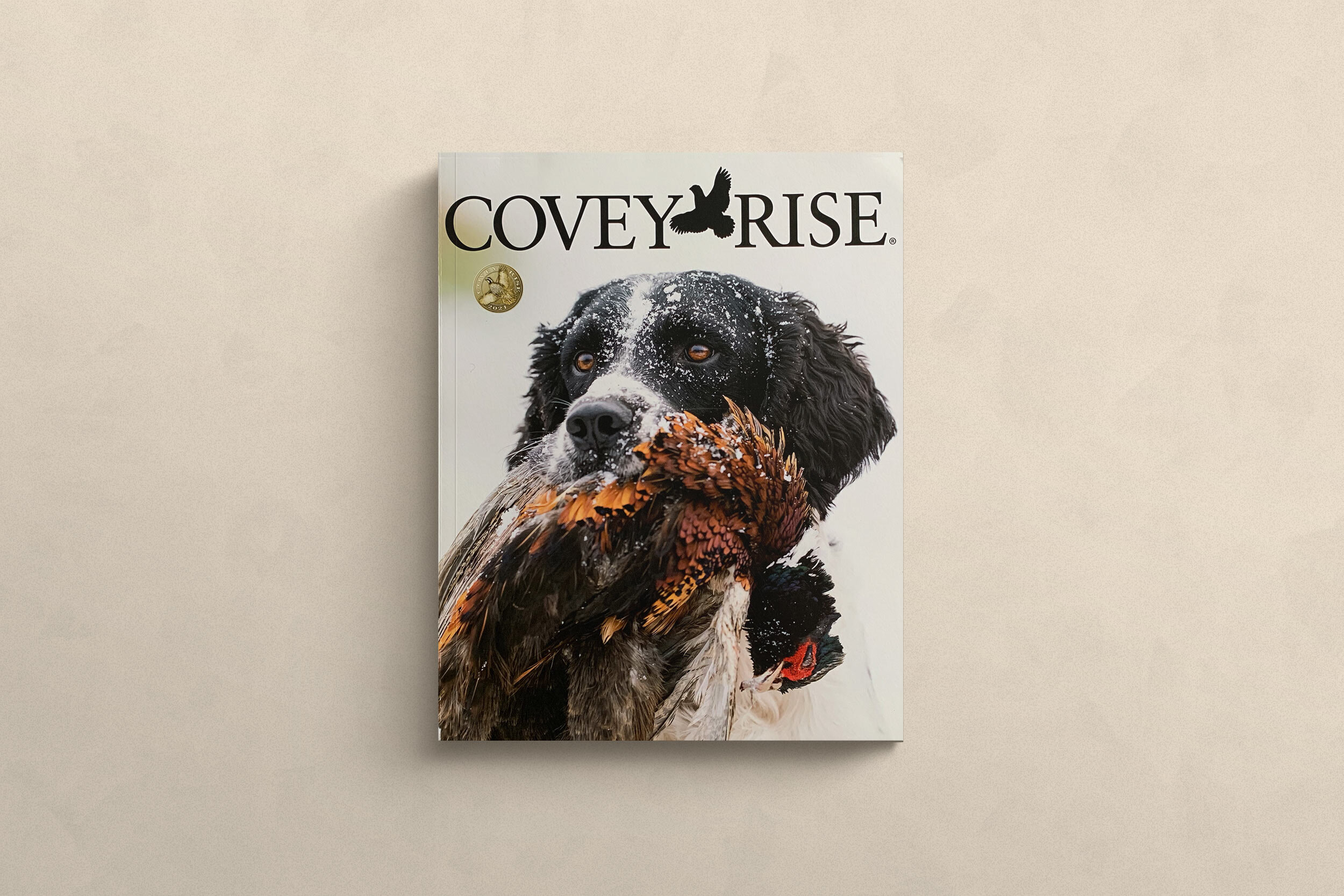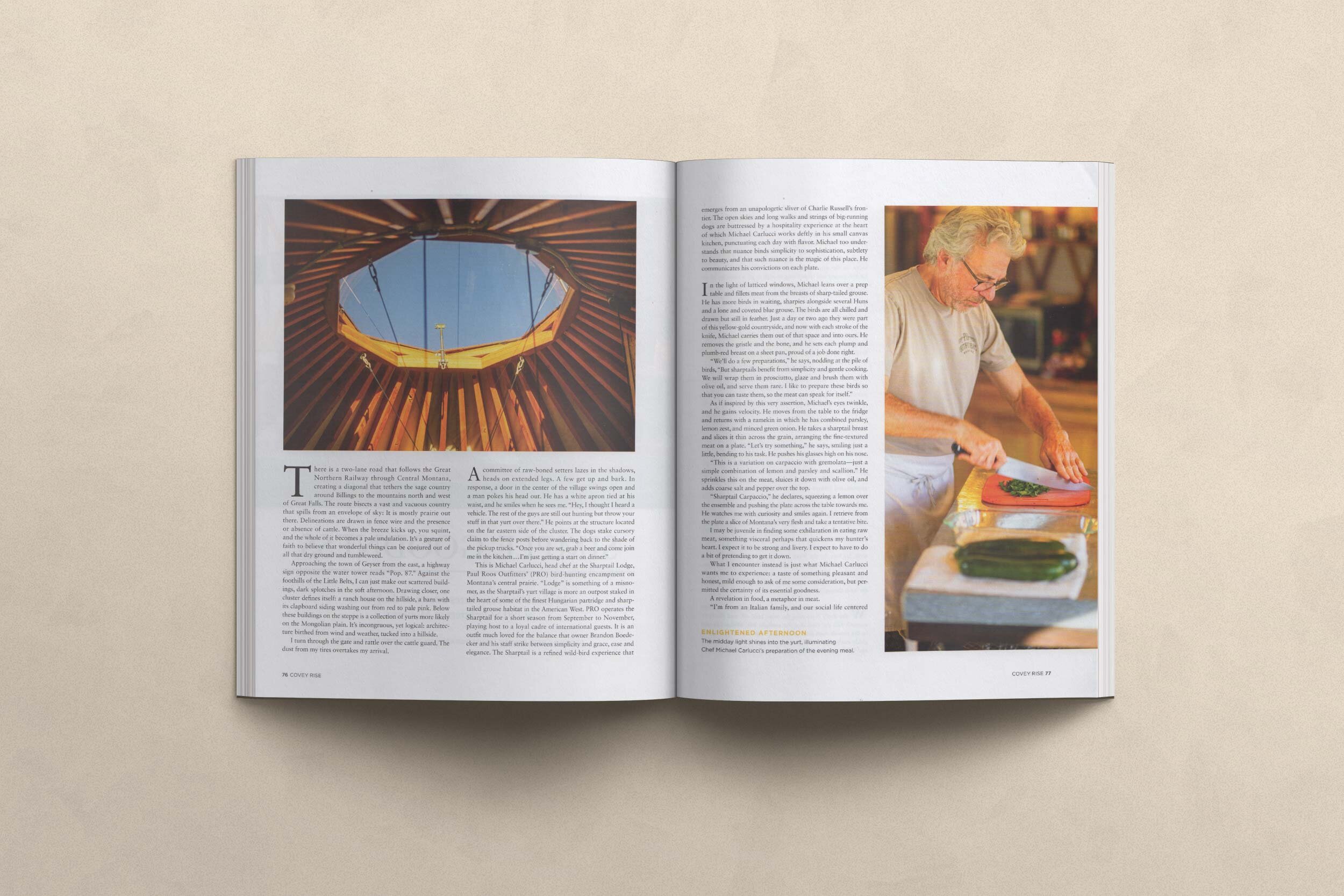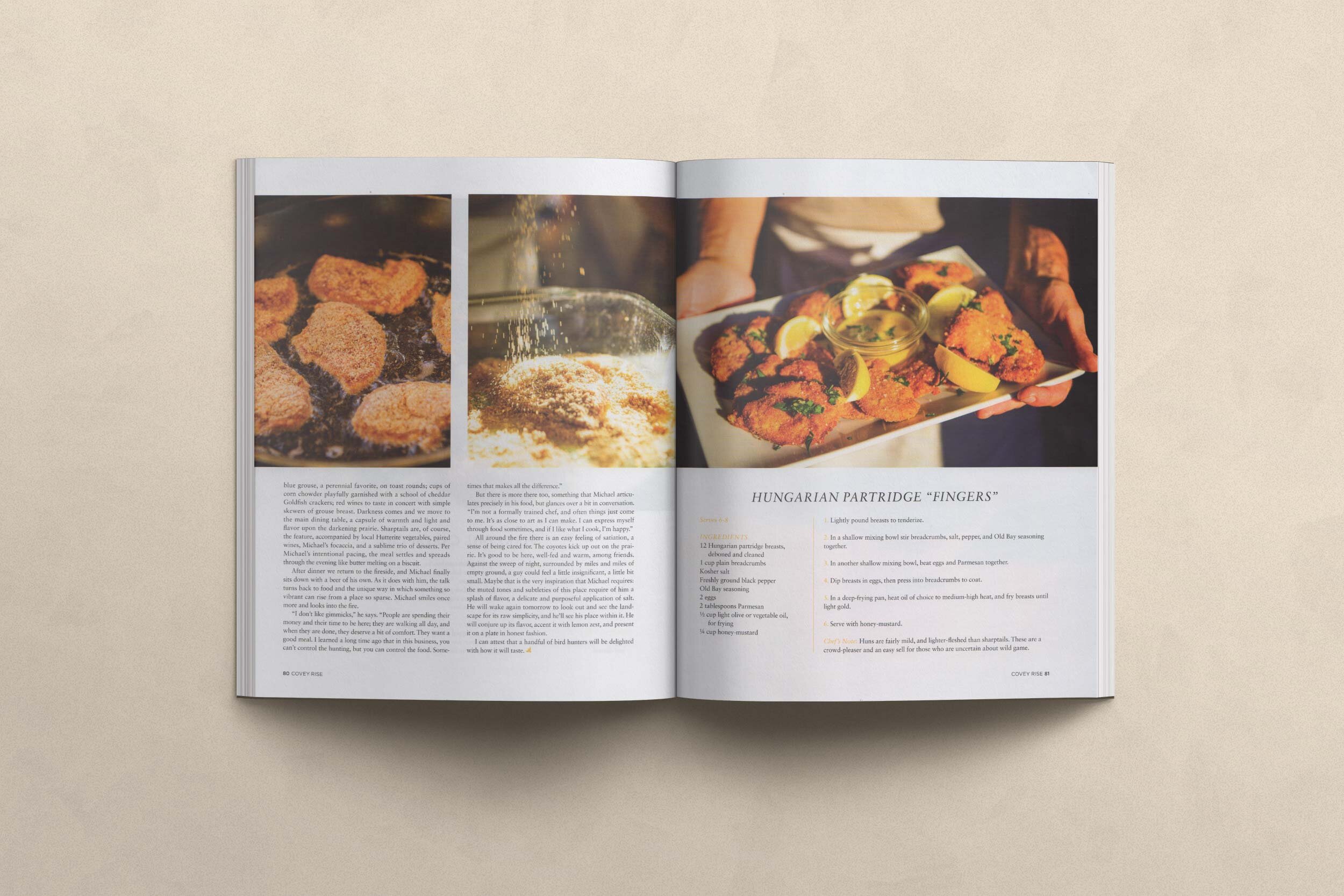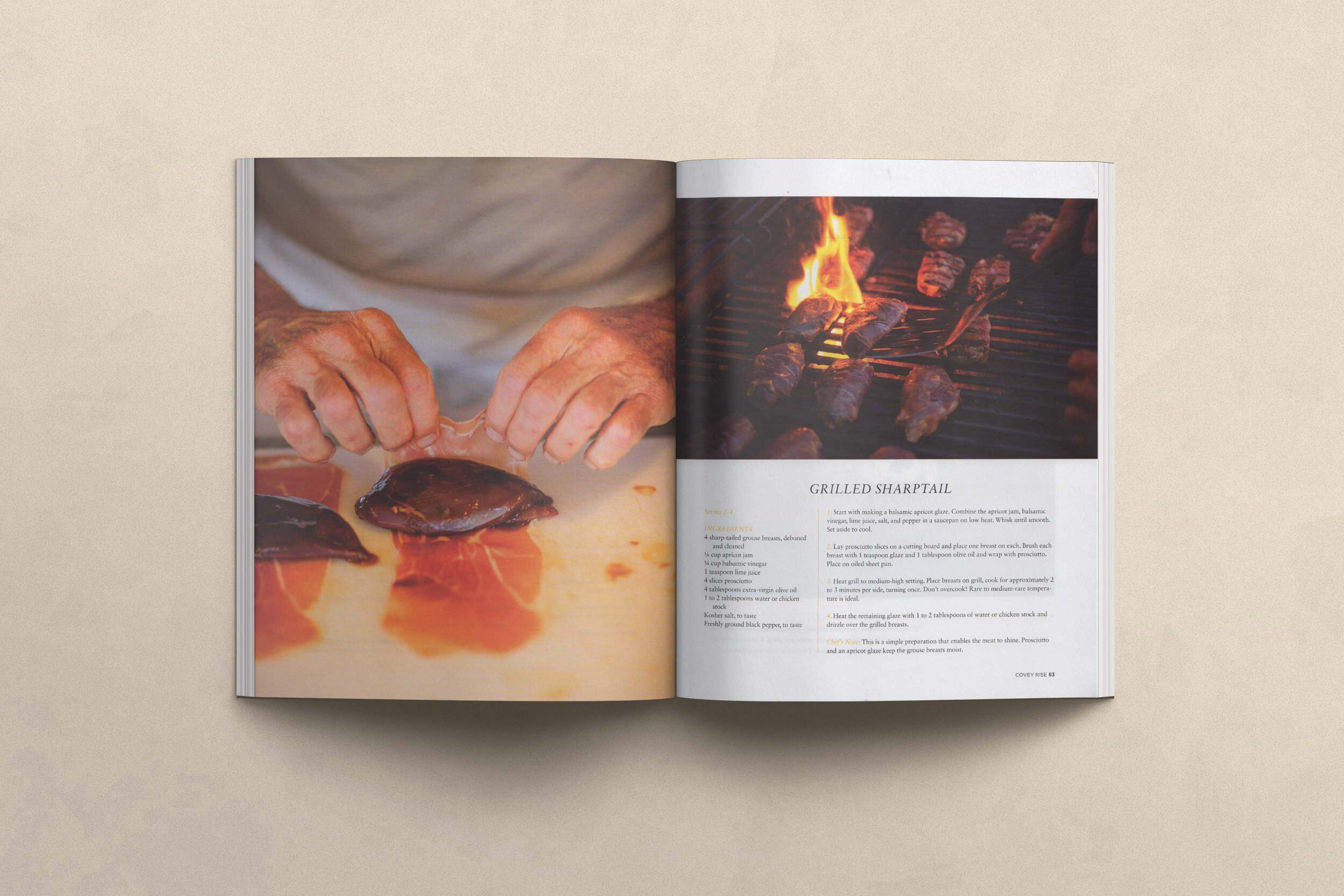Simple Ingredients
There is a two-lane road that follows the Great Northern rail through central Montana, creating a diagonal that tethers the sage country around Billings to the mountains north and west of Great Falls. The route bisects a vast and vacuous country that spills from an envelope of sky: it is mostly prairie out there. Delineations are drawn in fence wire and the presence or absence of cattle. When the breeze kicks up you squint, and the whole of it becomes a pale undulation. It’s a gesture of faith to believe that wonderful things can be conjured out of all that dry ground and tumbleweed.
Approaching the town of Geyser from the east, a highway sign opposite the water tower reads “Pop. 87”. Against the foothills of the Little Belts I can just make out scattered buildings, dark spotches in the soft afternoon. Drawing closer, one cluster defines itself: a ranch house on the hillside, a barn with its clapboard siding washing out from red to pale pink. Below these buildings on the steppe is a collection of yurts more likely on the Mongolian plain. It’s incongruous and yet logical: architecture birthed from wind and weather, tucked into a hillside.
I turn through the gate and rattle over the cattle guard. The dust from my tires overtakes my arrival.
*
A committee of raw-boned setters lazes in the shadows, heads on extended legs. A few get up and bark. In response, a door in the center of the village swings open and a man pokes his head out. He has a white apron tied at his waist, and he smiles when he sees me. “Hey, I thought I heard a vehicle. The rest of the guys are still out hunting but throw your stuff in that yurt over there,” he points at the structure located on the far eastern side of the cluster. The dogs stake cursory claim to the fenceposts before wandering back to the shade of the pickup trucks. “Once you are set, grab a beer and come join me in the kitchen… I’m just getting a start on dinner.”
This is Michael Carlucci, head chef at the Sharptail Lodge, Paul Roos Outfitter’s (PRO) bird hunting encampment on Montana’s central prairie. “Lodge” is something of a misnomer, as the Sharptail’s yurt village is more an outpost staked in the heart of some of the finest Hungarian partridge and Sharp-tailed grouse habitat in the American west. PRO operates the Sharptail for a short season from September to November, playing host to a loyal cadre of international guests. It is an outfit much loved for the balance owner Brandon Boedecker and his staff strike between simplicity and grace, ease and elegance. The Sharptail is a refined wild bird experience that emerges from an unapologetic sliver of Charlie Russel’s frontier. The open skies and long walks and strings of big-running dogs are buttressed by a hospitality experience at the heart of which Michael Carlucci works deftly in his small canvas kitchen, punctuating each day with flavor. Michael too understands that nuance tethers simplicity to sophistication, subtlety to beauty, and that such nuance is the magic of this place. He communicates his convictions on each plate.
*
In the light of latticed windows, Michael leans over a prep table and fillets meat from the breasts of sharp-tailed grouse. He has more birds in waiting, sharpies alongside several Huns and a lone and coveted blue grouse. The birds are all chilled and drawn but still in-feather; just a day or two ago they were part of this yellow-gold countryside, and now with each stroke of the knife Michael carries them out of that space and into ours. He removes the gristle and the bone, and he sets each plump and plumb-red breast on a sheet pan, proud of a job done right.
“We’ll do a few preparations,” he says, nodding at the pile of birds, “but Sharp-tails benefit from simplicity and gentle cooking. We will wrap them in prosciutto, glaze and brush them with olive oil, and serve them rare. I like to prepare these birds so that you can taste them, so the meat can speak for itself.”
As if inspired by this very assertion, Michael’s eyes twinkle, and he gains velocity. He moves from the table to the fridge and returns with a ramekin in which he has combined parsley, lemon zest, minced green onion. He takes a Sharptail breast and slices it thin across the grain, arranging the fine-textured meat on a plate. “Let’s try something…” he says almost to himself, smiling just a little, bending to his task. He pushes his glasses high on his nose. “This is a variation on carpaccio with gremolata… just a simple combination of lemon and parsley and scallion.” He sprinkles this on the meat, sluices it down with olive oil, adds coarse salt and pepper over the top.
“Sharptail carpaccio,” he declares, squeezing a lemon over the ensemble and pushing the plate across the table towards me.
He watches me with curiosity and smiles again. I retrieve from the plate a slice of Montana’s very flesh and take a tentative bite.
I may be juvenile in finding some exhilaration in eating raw meat, something visceral perhaps that quickens my hunter’s heart. I expect it to be strong, and livery. I expect to have to do a bit of pretending to get it down.
What I encounter instead is just what Michael Carlucci wants me to experience: a taste of something pleasant and honest, mild enough to ask of me some consideration, but permitted the certainty of its essential goodness.
A revelation in food, a metaphor in meat.
*
“I’m from an Italian family, and our social life centered around the dinner table. My mother, grandmother, aunts and uncles, they all focused on food.” Michael works as he talks, breading tenderized fillets of Hungarian partridge breast. “When I was a kid we lived in New Jersey, but my dad had a restaurant called Tom’s Luncheonette in New York City. I started working there at thirteen, and over time I did a bit of everything, from washing dishes to fixing milk shakes and iced tea to eventually becoming a short-order cook. I supported myself through college working in restaurants and bars, eventually cooking in a chain called Victoria’s Station and later working the front of the house at Montrachet in Tribeca. Back then it was no man’s land between canal street and the World Trade Center, and Montrachet was a gem of a French bistro.”
Michael’s story unfolds like this, a youth spent in New York’s up-and-coming restaurant scene rubbing elbows with chefs who have since become household names. His career evolved alongside a full-fledged passion for the fine art of dining, one that leveraged a meal as a means of connection between people, place, and a shared wedge of time. He went on to serve as a consultant in culinary and hospitality sectors, arriving to triage restaurants in collapse, and to re-affix them to their foundations. This work took him across the country and the globe. On one return trip from San Francisco, he laid over for a few weeks in Montana, where a friend was setting up a kitchen for PRO Outfitters at their North Fork Crossing fishing lodge on the storied Blackfoot River. He pitched in on the kitchen project and stayed long enough to get a taste for Montana. Johnny Kowalski, then owner of PRO, was impressed with his enthusiasm and curiosity; he approached Michael with an opportunity that would prove momentous.
Kowalski needed someone to cook on PRO Outfitters’ multi-day float fishing trips on the remote Smith River. Michael Carlucci, in transition between the culinary hubs of the east and west coast knew nothing of wilderness fly-fishing, backcountry camping, or serving the dining needs of such an expedition. In keeping with his curious nature, however, he signed on for a week’s trip.
“It was a low-water year,” says Carlucci, swabbing a pan of focaccia dough with olive oil and smiling, almost to himself. “And I couldn’t row. I dragged that overloaded boat six miles a day, helped set up camp, and I cooked. I don’t know what I expected, but by the end I was exhausted. I was utterly whipped. I couldn’t figure out why these guys hired me, but I did know that the one thing I wasn’t going to do was quit. I came to learn that Johnny was thinking that it wasn’t much of a match, but he had nobody to replace me. I did six trips that season and the last three were back to back: twenty-one days of sleeping on the ground. I came off that season exhilarated, but I’d fallen in love with Montana. By the time I left for a restaurant gig in Florida in mid-August, I was hooked.”
And so Michael returned, and stayed, becoming a much-appreciated fixture on the Smith. He learned to row and learned to fish, and learned that many such outfits were only beginning to realize that great food in a remarkable setting was a key differentiator. He eventually extended his season to include the autumnal transition from fishing to hunting, and the associated move from the river valleys to the prairie. With a bit more time and space to elaborate on his meals, Michael’s native care and curiosity took over. His cuisine became a reflection of his character, his love for the west, and the prairie’s raw and honest expression. With twenty years under his belt in rural Montana, you could say Michael has become as much a part of this landscape, and as much a reason for visiting PRO’s Sharptail, as the birds themselves.
*
We sit down around the fire on a fading afternoon. With the day departure the wind tails off, and the fire’s warmth fills the void that the sunlight left. Michael comes to the fireside with plate after plate, each one offered with a giddy enthusiasm: Hungarian partridge milanese, breaded and lightly pan-fried so that the flavor of the meat stands up; Blue grouse, a perennial favorite, on toast rounds; cups of corn chowder playfully garnished with a school of cheddar goldfish crackers; red wines to taste in concert with simple skewers of grouse breast. Darkness comes and we move to the main dining table, a capsule of warmth and light and flavor upon the darkening prairie. Sharptails are of course the feature, accompanied by local Hutterite vegetables, paired wines, Michael’s focaccia, and a sublime trio of desserts. Per Michael’s intentional pacing, the meal settles and spreads through the evening like butter melting on a biscuit.
After dinner we return to the fireside, and Michael finally sits down with a beer of his own. As it does with him, the talk turns back to food, and the unique way in which something so vibrant can rise from a place so spare. Michael smiles once more and looks into the fire.
“I don’t like gimmicks,” he says. “People are spending their money and their time to be here; they are walking all day, and when they are done, they deserve a bit of comfort. They want a good meal. I learned a long time ago that in this business, you can’t control the hunting, but you can control the food. Sometimes that makes all the difference.”
But there is more there too, something that Michael articulates precisely in his food, but glances over a bit in conversation. “I’m not a formally trained chef, and often things just come to me. It’s as close to art as I can make. I can express myself through food sometimes, and if I like what I cook, I’m happy.”
All around the fire there is an easy feeling of satiation, a sense of being cared for. The coyotes kick up out on the prairie. It’s good to be here, well-fed and warm, among friends. Against the sweep of night, surrounded by miles and miles of empty ground, a guy could feel a little insignificant, a little bit small. Maybe that is the very inspiration that Michael requires: the muted tones and subtleties of this place require of him a splash of flavor, a delicate and purposeful application of salt. He will wake again tomorrow to look out and see the landscape for its raw simplicity, and he’ll see his place within it. He will conjure up its flavor, accent it with lemon zest, and present it on a plate in honest fashion.
I can attest that a handful of bird hunters will be delighted with how it tastes.
Recipes:
Grilled Sharptail Grouse – A simple preparation that enables the meat to shine. Prosciutto and an apricot glaze keep the grouse breasts moist, and be certain not to over-cook.
4 Sharptail breasts, boned and cleaned
4 slices prosciutto
4 t Balsamic apricot glaze
4 T extra virgin olive oil
Balsamic Apricot Glaze:
¼ C apricot jam
¼ C balsamic vinegar
1 t lime juice
salt and pepper to taste
Recipe:
1. Glaze – Combine all ingredients in a saucepan on low heat. Whisk until smooth. Set aside to cool.
2. Lay prosciutto slices on a cutting board and place one breast on each. Brush breast with marinade and wrap with prosciutto. Place on oiled sheet pan.
3. Heat grill to medium-high setting. Place breast on grill, cook for approximately 2-3 minutes per side, turning once. Don’t overcook! Rare to medium rare temp is ideal.
4. Heat remaining glaze with 1-2 T of water or chicken stock and drizzle over the cooked breasts.
Hungarian Partridge “Fingers” – A crowd pleaser. Huns are fairly mild, and lighter-fleshed than Sharptails. These are a crowd-pleaser, and an easy sell for those who are uncertain about wild game.
12 Hun breasts, boned and cleaned
1 C plain breadcrumbs seasoned with salt, pepper & Old Bay seasoning
2 eggs
2 T Parmesan
¼ C honey-mustard
½ C light olive or vegetable oil
Recipe:
1. Lightly pound breasts to tenderize.
2. Beat eggs and Parmesan together.
3. Dip breast in eggs, then press into breadcrumbs.
4. Heat oil to medium hot, fry breasts until light gold.
5. Serve with honey-mustard dip.
Sharptail Grouse Carpaccio – Incredibly mild and lovely in texture, this recipe was a bit of a revelation. Dark-fleshed birds can be treated somewhat like beef, and a carpaccio lets the essential flavor shine.
2 Sharptail breasts boned and cleaned of shot, bones and feathers
1 T radish matchsticks
1 T extra virgin olive oil
1 t lemon juice
Kosher salt
Fresh ground black pepper
Gremolata – 1 T chopped parsley, 1 t lemon zest, 1 T thin sliced scallion.
Recipe:
1. Separately prepare ingredients and combine.
2. Thinly slice breasts into approximately 1inch pieces.
3. Lay slices on a cold plate.
4. Sprinkle meat with radish matchsticks, gremolata, salt and pepper.
5. Drizzle with olive oil and lemon juice.
Bourbon Pecan Pie – A perennial favorite, and one that draws Dave Perkins of the Orvis Company back to Sharptail as much as the hunting…
Basic Pie Dough
2 C all-purpose flour
1 T sugar
¼ t salt
2 sticks chilled unsalted butter cut into ½ inch pieces
5-6 T ice water
Recipe:
1. Combine dry ingredients in a stand mixer with paddle attachment.
2. Add butter on low speed until mixture is crumbly.
3. Slowly drizzle in water until dough begins to come together.
4. Turn out onto a floured surface and press dough together into a disc.
5. Wrap in plastic and refrigerate one hour.
6. Note: this recipe makes 2 standard pie crusts.
Filling
1 C dark Karo syrup
3 eggs
1/3 C brown sugar
2/3 C sugar
1 t vanilla
1 T bourbon
2 T melted butter
1 ½ C whole pecans
Recipe:
Place pecans on a sheet pan and toast in 350 oven for 5 minutes. Let cool and coarse chop.
Combine all ingredients and whisk smooth.
Assembly:
Set oven temp to 350.
For one pie: cut pie disc in half. Roll out disc and fit into pie dish.
Pour filling into pie pan.
Bake 55-70 minutes.
Let cool before serving.
Citrus-Pistachio Olive Oil Cake – A light and divine nod to Italy. Very fresh and easy; a crowd-pleaser…
1 ¼ C flour
2 t baking powder
½ t salt
Zest of 1 lemon
Zest of 1 orange
¾ C olive oil
¼ C almond or plain milk
1 t almond or vanilla extract
3 eggs
1 C sugar
2/3 cup unsalted shelled & chopped pistachios
Recipe:
Heat oven to 350 degrees
Grease 8” cake pan with vegetable spray and line bottom with parchment.
Whisk together flour, baking powder and salt. Set aside.
In a stand mixer fitted with a whisk, whip eggs, sugar and zest for about 5 minutes on medium speed until fluffy.
On low speed add milk and extract until combined.
On low speed gradually beat in oil by drizzling it in very slowly. This should take about a minute.
Fold in flour in thirds.
Fold in nuts.
Pour into prepared pan.
Place in center of oven and bake for 30-35 minutes. Let cool in pan for 10 minutes then remove from pan and let cool to room temp. Serve with lemon curd or whip cream.
First Published in Covey Rise





